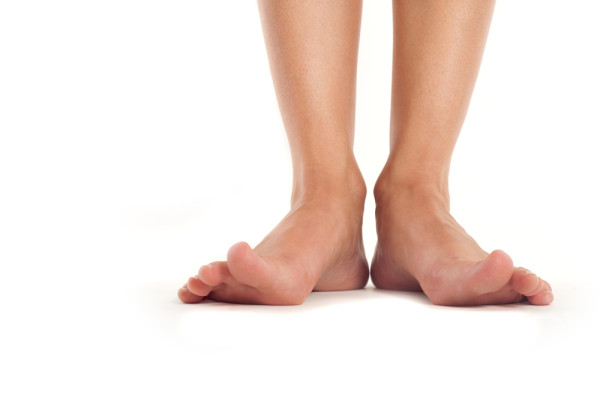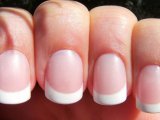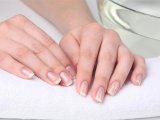In contact with
Classmates
Onychomycosis or nail fungus- a fairly common disease that is very difficult to treat and repeatedly resumes. According to statistics, this type of fungus is found in a quarter of the population of the post-Soviet space. Most common toenail fungus.

It is interesting that people living in big cities and leading a healthy lifestyle are susceptible to toenail fungus diseases. This is due to the fact that they regularly visit swimming pools, gyms, saunas and other places where the risk of fungus transmission is highest.
There are also factors that increase the risk of a fungal disease, namely: excessive sweating, poor-quality shoes, poor-quality synthetic socks, diaper rash, neglect of foot hygiene rules. All these risk factors can be easily erased from life - you just need to pay attention to it.
There are quite a few types of fungus, they differ in the types of pathogens and, accordingly, manifest themselves in different ways. But the course of the disease almost always follows the same scenario.
Initially, the surface of the infected nails weaken and begin to become covered with small cracks. Sore nails can be roughened partially and completely. Over time, the nails change their color, stripes and spots of yellow appear. There is a specific unpleasant smell from the nails, inside which small voids form. As a result, they begin to loosen and crumble. You should be aware that the lack of treatment will lead to complete loss of nails. Also, nail fungus can go in a latent form, worsening in the absence of appropriate treatment.
In the case when folk remedies for the treatment of fungus do not suit you, you should definitely consult a doctor and undergo the necessary examination. It is necessary to visit a doctor even if you suspect a fungus. The sooner the treatment of the fungus begins, the greater the chance to get rid of it and prevent possible relapses.
Toenails are the most prone to fungus due to the fact that moisture and heat generated inside closed shoes contribute to its development. Also, the use of someone else's shoes, such as slippers, may well contribute to infection with the fungus. However, do not forget that fingernails are also prone to onychomycosis.
Scientists suggest that susceptibility to the fungus is transmitted genetically. In such situations, when one of the parents gave you a gene for increased susceptibility to the fungus, you need to be vigilant and, in case of illness, start treatment at an early stage.
Damage to the nails can also be the cause of the appearance of the fungus. This is due to the fact that microbes can enter the cavity of the nail, where it does not adhere well to the skin due to injury. Climbing deeper, microbes begin to multiply. First, the fungus affects the skin and then takes on the nail.
There are also types of fungi that can be removed with antimycotic medications, but they will work if the fungus has not penetrated very deeply.
Types of fungus
There are more than three hundred thousand species of fungus worldwide, but few of them can cause damage to the nail and skin. All fungi have their own properties and characteristics. For example, a fungal disease called dermatophyte can be asymptomatic and last for many years. It destroys slowly, moving from the inside of the nail to its surface. In the initial stages, a dermatophyte can be identified by small yellowish purulent dots. Its counterpart is trichotonous fungus, which acts in the opposite direction - first destroys the outer side of the nail, penetrating deeper. The defeat of the nail with this type of fungus will lead to its complete exfoliation from the skin. Yeasts, or candida, cause very severe inflammation that starts at the base of the nail. Also, candida is chronic and gives the nail an unpleasant brown-green color. The nail plate from candida is destroyed quite quickly.
At present, specialists cannot always accurately determine the presence of a fungus based on an external examination of the area that is disturbing the patient. That is why a special analysis is carried out, which determines the type of fungus (mold, yeast or dermatophytes, and so on). After all the necessary tests, the final diagnosis is made. Affected toenails and toenails can be identified by their irregularities, color and, in advanced cases, even smell. The doctor, after establishing the exact dianosis, will be able to prescribe an effective treatment more accurately.
The most common is rubromycosis - a fungal disease that simultaneously affects the nails of the hands and feet, as well as areas of the skin next to them. Rubromycosis affects more than 20% of the world's population.
Express diagnosis of nail fungus on the legs and hands
You can determine the presence of a fungus at home in the presence of potassium permanganate (potassium permanganate). To do this, it is necessary to dilute potassium permanganate in water so that the water is of a faint purple color. Dip any nails you think are infected in this solution for a few minutes. This solution will color the healthy parts of the nail brown, but the affected parts will remain light. If your suspicions are justified, go to the doctor. After carrying out this diagnosis, you should disinfect your nails with hydrogen peroxide.
How to treat toenail and handnail fungus?
The effectiveness of the treatment of nail fungus can be determined directly by the state of the nail plate. In cases where it is not severely affected, external methods of treatment can be used.
In the world there is a huge amount of funds for the treatment of the fungus in the early stages. Treatment of the fungus with such means takes place at home. Often, kits for the treatment of fungus at home include various ointments that soften the nails, as well as scrapers to clean the nail plate. Treatment with such means lasts about two to three weeks.
Also very popular are antifungal varnishes that can be used along with manicures during your treatment.
In cases where you are delayed with treatment and most of the nail plate is affected, external means are indispensable. Treatment of such a fungus is more complex and lengthy. You need systemic treatment with the use of special tablets that carry the necessary substances into the blood. This kind of medicine should be drunk for about half a year, depending on the recommendations of the doctor and the degree of the disease. The use of exclusively external means can only lead to temporary improvement.
Do not forget that the fungus is very tenacious and in case of undertreatment, it will return with immunity to the drug that you used against it. Also, the fungus may return due to re-infection with the same shoes that you used before. Given the properties of the fungus, it is not recommended to treat treatment irresponsibly, as well as to the sources of the disease. But in the modern world, there are drugs that do not form addiction in the fungus and have high antifungal activity. For example, "Mikosan" made on the basis of rye enzyme filtrate is used to treat fungal relapses. The serum contained in this preparation destroys the fungus inside the nail, which helps to reduce the risk of recurrence.
Pulse therapy is an effective way to treat nail fungus, which involves taking drugs with a long interval, which allows the body to recover and combine with other drugs. Pulse therapy is most often prescribed for up to three months. But these three months are enough to keep the fungus from returning for a year. After the complete restoration of the affected nails, repeated tests are carried out by the doctor.
If we talk about surgical intervention, it should be noted that it is ineffective, primarily because of the trauma, due to which the risk of re-infection is high. Secondary infection often provokes a recurrence of the disease.
Related content:

Nails are made up of dead cells pressed together tightly to form a hard but flexible surface. Today, when low-calorie diets, irregular working hours and constant stress are “popular”, nails are also subject to constant ailments. They get brittle...

Foot fungus (foot mycosis) is the most common skin disease caused by the action of various types of fungi. Symptoms of the disease are dryness, peeling, cracking and itching of the skin of the feet. Also, areas of the skin affected by a fungal infection turn red. Previously, a foot fungus (mycosis) suffered from a large ...


